Genre: Sports Developer: BlueSky Software Publisher: Sega Enterprises Players: 1-2 Released: 1993
The story of Sega’s Joe Montana Football games is an unusual one. Sega’s Jim Huether originally planned for a horizontally scrolling football title for Sega’s new 16-bit Sega Genesis system. Huether believed that a horizontal view gave the players a better view of more of the field, sideline-to-sideline as well as far enough down field for all players to be in view except on “hail mary” pass plays (read the whole interview). Unfortunately, due to problems with the developer, Sega had to turn to Electronic Arts (EA) for the first game in its Montana series, leading to a vertically scrolling design similar to EA’s new John Madden Football game (read the whole story). So it wasn’t until the next game in the Montana series that Sega was able to create a horizontal scrolling game as it had originally intended.
The next three games in the series by BlueSky Software used Sega’s innovative Sports Talk technology and broadcast-style camera angles to make football games presented similar to real NFL games on television. At the same time, Joe Montana worked with an NFL offensive coordinator, Tom Walsh of the Los Angeles Raiders, to create strategy and gameplay similar to the real NFL game on the field. While the first two games by BlueSky had some problems, in 1993 it presented NFL ’94 starring Joe Montana which had a staggering array of features and fast gameplay. Sega had previously secured an NFL license for NFL ’93 for real NFL team names and logos. With NFL ’94, it added the NFLPA (NFL Players Association) license, allowing them to add the real names and attributes of over 800 real NFL players!
Despite being the third football game to use Sega’s innovative Sports Talk audio, Sega decided to drop it from the name. Even so, NFL ’94 has the best version of the series. Featuring the voice of famous San Francisco broadcaster Lon Simmons, Sports Talk in NFL ’94 is remarkable for its time, providing live commentary during gameplay. The speed was improved so that it always keeps up with the gameplay and accurately matches what you see on the screen. The announcer uses hundreds of phrases and even gives details of yardage, score, and statistics. He even throws in some color commentary, most famously, “I can’t believe it!” when you try something stupid. If you’ve never heard the announcer in this game, you’ll be amazed at how much variation there is. Continuous live commentary would not be done this well again for two console generations!
NFL ’94 has two levels of graphics, depending upon if the play has zoomed in or not. In the zoomed out view, the players are small enough to allow a large portion of the field to be seen. Also, the players and the ball are accurately scaled to match the dimensions of the field. When zoomed in, the players are enlarged to six times their previous size. All of the players are rotoscoped, a form of digitizing a real person to create a very smoothly animated and life-like image compared to most hand-drawn video game characters at the time. Plus, it all moves fast like the real thing. These are the best player graphics in a 16-bit football game.
The vertical and horizontal views of the playing field are clear to read with smooth scrolling in all directions. New to NFL ’94 is the option for a vertical-perspective view with the field tilted at an angle to allow a further view down field yet the scrolling is still equally smooth. Overall, there are six different camera angles to choose from, including two views from behind the defense. The new views include the perspective views from either behind the offense or defense with the field tilted to allow a deep view down field. Along with different field types, NFL ’94 also has dynamic weather effects with visible falling rain or snow.
NFL ’94 is a simulation of the NFL. Every team is an accurate representation of their real-life counterparts from the players, team colors, and logos to their real offensive playbooks and defensive tendencies. Teams like the Atlanta Falcons use the run-‘n-shoot offense while the Houston Oilers like to play the 46 defense, for example. Each team plays differently, with different strengths and weaknesses.
The running game looks and plays great. Whenever the quarterback hands off the ball, the view zooms in to allow you to easily see where to run (the same happens after a catch or interception, too). When running with the ball, players can use a burst of speed, stiff-arm, spin, dive, or hurdle. Sega and BlueSky digitized a real NFL running back, Marcus Wilson, so the players look and move like the real thing. Players also have momentum, starting slowly then speeding up as you hold the D-pad with turning at top speed being more difficult.
The passing game can be played two different ways. The default way to play is by selecting a receiver then choosing a bullet or lob pass. Accuracy is determined by several factors: timing, pressure, whether or not the passer is set or running, and the skill ratings of everyone involved. Passing is like the real NFL, requiring anticipation of where the receiver will be. And it’s easier to complete passes with Joe Montana than it is with someone like Stan Gelbaugh, for example.
The other method of passing uses a target. When a receiver is selected, a target is spotted on the receiver and the ball will be thrown directly to that target on the field. The target can be moved with the D-pad, allowing the passer to lead a moving receiver. If the player does not move the D-pad prior to selecting a receiver, the passer will drop back automatically and even scramble under pressure, allowing the player to concentrate on moving the passing target. You can actually use the automatic drop back in either passing method but it’s more useful when using the passing target method.
The best part of the passing game, regardless of which method is used, is that it works like the real thing. You can see where the quarterback is looking at all times, and it’s possible to “look-off” a defender by looking one way then switching and throwing to another. Timing is important, and waiting to throw until after the receiver is there will almost certainly result in an incomplete pass or even an interception. Would-be NFL quarterbacks will need to learn to read coverage and make split-second decisions to have success in this game. The game even includes some advanced passing routes, called option routes, which allow the receiver to run a route based upon the defense’s coverage. For instance, the receiver might run a deep post against a zone with split safeties or run a quick out if it’s a blitz. Reading these option routes correctly takes quick thinking but can be extremely effective.
Playing defense also requires quick thinking. Every defender has a responsibility on defense and the computer (or a good opponent) can take advantage if you don’t do your assignment. Blitz when you’re supposed to cover a zone, for example, and the computer is sure to hit a wide open receiver where you were supposed to be covering! All of the common NFL defenses are included: 3-4, 4-3, 46, prevent and goal line, with different combinations of zone, man-to-man, and blitz coverages.
The kicking game is played using a standard meter for strength and direction. A wind gauge shows strength and direction, as well. Field goals require skill even at shorter ranges but anything over forty-five yards will be more difficult, just as in the NFL. You have the option of regular, onside, or squib kicks for kickoffs and punting into the open field past your coverage can lead to a hard-to-make open field tackle.
The play-calling is also based upon the real NFL. You can choose a set of players, such as four wide receivers and a running back. From that set, you’ll be given a group of formations that work for those players, like a double-slot formation or trips-right, but not a formation that requires tight ends. In addition, you’ll have options of substituting your quarterback, using the shotgun, formation shifts, and motion. Finally, you’ll have a group of plays from the formation and options that you chose. An example of a play: Quads, Tan, Shotgun, Shift+Motion, 81 X Choice. Although it seems complicated at first, it doesn’t take long to quickly select exactly the play that you need, with thousands of combinations to choose from just like the pros. And just like the pros, the better you know your team’s playbook, the better you will do on the field.
In general, the computer plays a good game and will take advantage of your mistakes. The computer will also take away plays that you had success with before, not cheaply with random fumbles or penalties, but by actually cutting on a route that was more open the last few times you had success with it or being more aggressive where you’ve gained yards running the ball before. Likewise, there’s no cheap catching a fast player from behind, just like the real thing, so you or your opponent can break a big play. Going for it on fourth down can get stuffed like the real pros so you’ll have to play smart to win. This game can be tough, but it’s also fair – checking the replay will show where you made a mistake when it doesn’t seem like it was fair. Even after all these years, I know that I’m in for a good challenge when playing the computer, and that always makes this game fun to play.
The depth of NFL ’94 is amazing. You can play from six different views and even change views and switch the zoom camera on or off after ever play. Switching views is simple using a quick overlay menu between plays. You can also choose to watch a replay from alternate angles from this quick menu, and the game remembers your previous view so that you don’t have to switch back. I like playing from the horizontal view, but it’s great to be able to watch the replay from behind the defense, for instance.
You can choose from three difficulty levels, with the computer actually showing you the play it chooses and simplifying the play-calling for the player on the beginner level. On the difficult level, you might need several defensive backs to bring down a running back in the open field. Games can be played with five, ten or fifteen minute quarters. You can also play a single exhibition game or up to three full NFL seasons, based upon the 1991, 1992, and 1993 schedules. You can also play as coach, choosing plays and letting the computer control your players.
There are several multi-player options, as well. You can play a versus game or co-op with another player against the computer. Either player or both can also play as coach in the versus mode. The coaching mode is also a great way to practice against specific plays, playing as one player then choosing plays as coach for the other side.
During games, you’re bombarded with a wealth of stats, including game, team, and individual player. You can see entire game stats or by each quarter, as well. After every score, you are provided with an excellent color-coded graph of the drive summary. One of the most satisfying rewards is seeing something like a twelve-play, eighty-yard drive summary! When playing the season mode, NFL ’94 remembers statistics for the entire season. After every game, you get to read the Sega Sports page with league standings and the top ten in every individual and team category for the NFL, NFC, and AFC. For those that love statistics, there’s nothing more rewarding than leading the league in passing or having the best run defense in your conference, for example. Game saves are accomplished through battery back-up, so all of your stats will be there the next time you play.
With NFL ’94 starring Joe Montana, Sega went all out with the best and fastest graphics, the best audio, the most options, and the deepest gameplay. It also included the best licenses, having them for the NFL, NFLPA, and three-time Super Bowl MVP Joe Montana. For these reasons, I believe this is the best football game of the 16-bit era.
SCORE: 10 out of 10

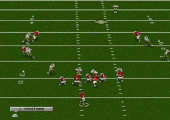
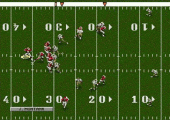
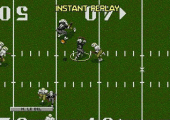
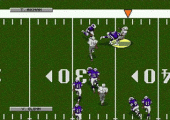
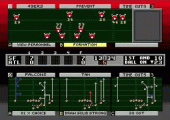
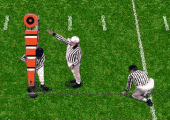
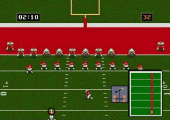
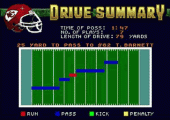
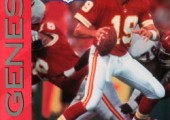
Recent Comments